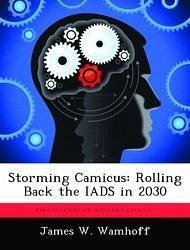The goal of this research was to determine how the U.S. Air Force will defeat an advanced air defense network with a technology level that is 25-30 years in the future. Specifically, it builds on the work of U.S. Air Force Lt Col James R. Brungess. In his 1994 book, Setting the Context: Suppression of Enemy Air Defenses in an Uncertain World, Brungess explored how air defense technology might develop. It was by sharpening the focus on Brungess' hypothesis that the author hoped to achieve the research goal. A panel of experts constructed a pair of forecasts using a Delphi Study. The first forecast characterized an advanced air defense system in 2030, while the other characterized the military technology available to defeat it. The forecasts were then analyzed using Kem and Strange's critical vulnerability methodology. The resulting concept of operations posited a friendly force that relies on a combination of advanced munitions, network enabled integration and mass to defeat the networked integrated air defense system likely to exist in 2030. The study concluded by encouraging changes to doctrine and procurement.







